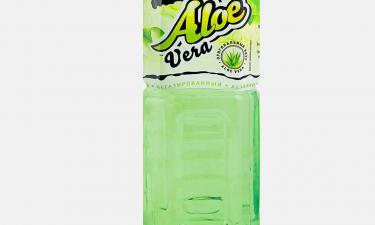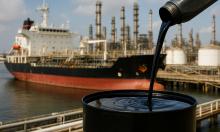Swine Flu Hysteria in Russia Makes Anti-Virus Millions
Prices for anti-virus medicine in Moscow pharmacies have responded to the increased demand and informational panic caused by the media in regard to the so-called swine flu epidemic.
In a number of regions, pharmacy inspections have begun to investigate artificial price mark-ups for certain medications. Pharmaceutical giants are making millions on swine flu, and the population is voluntarily paying for being fooled.
Earlier this fall informational pandemic seized neighboring Ukraine. The informational sabotage started on October 30, when Ukraine’s Health Minister Vasily Knyazev announced A/H1N1 epidemics. Then there were large-scale informational attacks when one could hear about the flu a dozen times a day in a dozen different places.
The most sensitive part of the population rushed to buy onions, garlic, and medications. Flu masks and medicine were sold under the counter at marked-up prices. However, the panic subsided in less than two weeks. During the turmoil, the officials “forgot” to check what happened to 50 million grivnas allocated on prevention of epidemic back in spring.
Medical professionals say that the next epidemic is to be expected in the upcoming months of December and January. The epidemics in the media would continue even longer, but Yushchenko vetoed allocation of another billion grivnas to fight the flu. The issue of vaccination became very acute.
The interested parties are trying to overcome the veto and launch the media virus again. It will make sensitive Ukrainians to rush to pharmacies yet again and buy pounds of useless Chinese garlic at unreasonable prices and get all kinds of shots while pharmaceutical companies enjoy enormous profits.
In Russia the panic is developing on a lesser scale, but is still persistent. Within the last month the number of Russians who admitted to being afraid of catching swine flu has doubled. It is likely that when these poll results are released, the number of those who are scared will increase even more.
Earlier this year, President Dmitry Medvedev ordered that the Federal Antimonopoly Service and the Prosecutor General’s office establish control over sales of anti-flu medications.
Veronica Skvortsova, Russia’s Deputy Minister of Health Care and Social Development, shared her thoughts with MedPulse.ru. She said that the situation with the epidemics was blown up by the media. She emphasized that the seasonal increase in flu cases, including notorious А /H1N1, did not exceed the level of the last few years.
“In general, the situation is typical for any pandemic. There are no grounds for panic,” Skvortsova said. She stressed that the mortality rate caused by A/H1N1 does not exceed 0.4%.
In the beginning, people were told by the media about the origins of swine flu. Allegedly, it first appeared in 1976 when a soldier died at the American military base Fort Knox. However, it was decided to vaccinate the entire US.
The vaccine was quickly developed, and approximately 40 millions of Americans were vaccinated. 32 people died from the vaccine itself (more than died of the flu). Another 52 developed Guillain- Barré syndrome accompanied by paralyses, lungs insufficiency, and probable death. The US spent $90 million for the compensation to those “saved” from the flue.
Pharmaceutical companies make huge profits selling their medications. There are no exact data on the increase in sales of the most popular anti-virus medications (Arbidol, Aflubin, Tummy Flu, etc) but experts assume that the increase exceeds 60% of the regular seasonal increase. By the way, Tummy Flu was widely advertised during not so successful marketing panic with the bird flu in 2005.
However, that campaign was “not so successful” only in Russia. In the US, Hoffmann-La Roche raised some serious cash in 2005 when the Congress allocated $7.1 billion to fight the “fatal threat” of the bird flu. $2 billion was spent on purchase of 20 million doses of Tummy Flu, $100 per dose. Great Britain, Japan and a number of other countries rushed to buy the medication. As a result, Hoffmann-La Roche’s sales have increased from $254 million in 2004 to $1 billion in 2005.
Money can be made in the stock market as well. After the drop in 2008, stocks of La Roche, GlaxoSmithKline Biologicals (Relenza manufacturer), and Novartis (swine flu vaccine manufactures) showed a solid growth at the stock market.
Sergey Nikolaev.
Subscribe to Pravda.Ru Telegram channel, Facebook, RSS!




